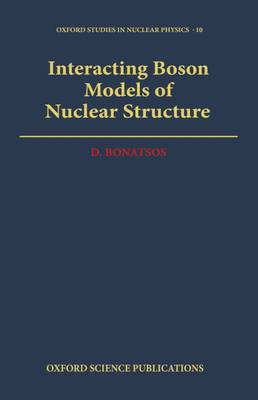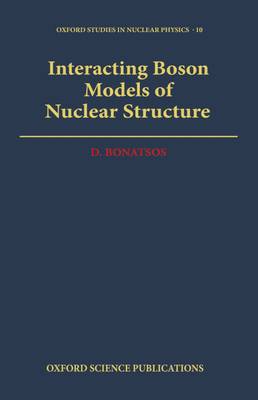
- Afhalen na 1 uur in een winkel met voorraad
- Gratis thuislevering in België vanaf € 30
- Ruim aanbod met 7 miljoen producten
- Afhalen na 1 uur in een winkel met voorraad
- Gratis thuislevering in België vanaf € 30
- Ruim aanbod met 7 miljoen producten
Zoeken
Omschrijving
This text is designed to provide physicists with an accessible introduction to the interacting boson model, an approach to nuclear structure that was first proposed in 1974, with several important extensions and generalizations appearing over the last decade. The value of this model lies in the fact that the traditional shell model of nuclear structure is limited in its application to light nuclei or heavier nuclei with only a few valence nucleons outside closed shells. Beyond these limits, the model requires prohibitively large-scale calculations. For this reason, the introduction of collective models has been necessary, including the approach described here. Algebraic descriptions for the effects of clustering, permanent octupole deformation, and giant resonances are included. And, for the description of odd nuclei, the interacting boson-fermion model has been introduced, and nuclear supersymmetries associated with it have been analyzed.
Specificaties
Betrokkenen
- Auteur(s):
- Uitgeverij:
Inhoud
- Aantal bladzijden:
- 332
- Taal:
- Engels
- Reeks:
- Reeksnummer:
- nr. 10
Eigenschappen
- Productcode (EAN):
- 9780198517276
- Verschijningsdatum:
- 22/12/1988
- Uitvoering:
- Hardcover
- Formaat:
- Genaaid
- Afmetingen:
- 156 mm x 234 mm
- Gewicht:
- 639 g

Alleen bij Standaard Boekhandel
+ 280 punten op je klantenkaart van Standaard Boekhandel
Beoordelingen
We publiceren alleen reviews die voldoen aan de voorwaarden voor reviews. Bekijk onze voorwaarden voor reviews.











